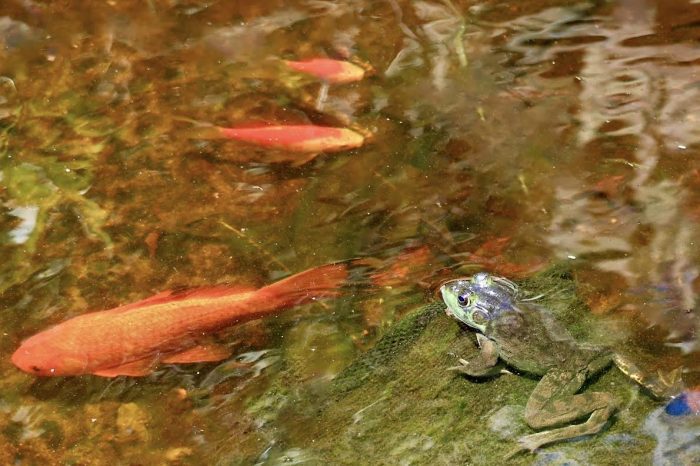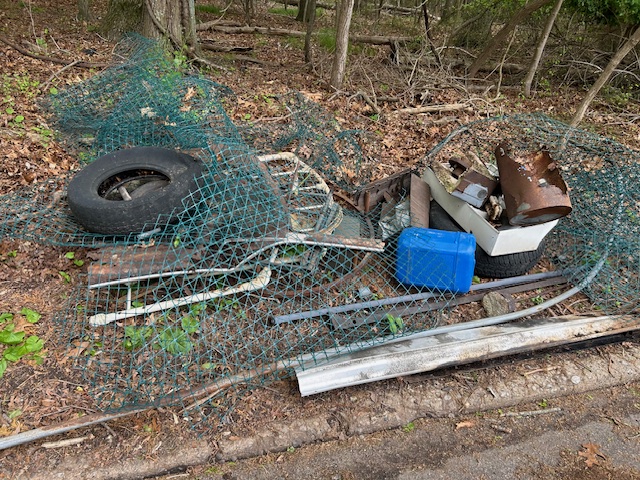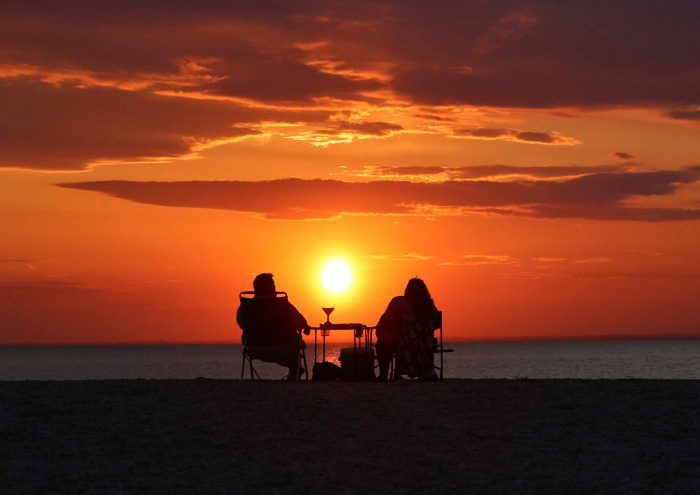By John L. Turner
I first heard their piercing, three-parted “tew-tew-tew” calls while sitting on the slatted bench in the northwest corner of the Three Village Garden Club property on a day in early May. I’m looking out over the mudflats revealed during low tide at the southern end of Conscience Bay and on the far bank are eighteen Greater Yellowlegs, a highly migratory species of shore bird feeding on the west bank of the bay.
Living up to their name, the birds have spindly, bright yellow legs that stand out amidst the brown background of the intertidal mud. Their piercing calls have led to a few colorful colloquial names: the telltale and the tattler.
The flock could have begun their northbound journey as far south as southern Argentina in February or March and during the intervening weeks moved north, soon passing the equator, all the while hopscotching from one fresh or saltwater wetland to another, like the ones at the southern sliver of Conscience Bay. By the next day they had departed to make their way another thousand miles to the north to nesting grounds — a wide swath across the middle of Canada.
The bay was a waystation for these hemispheric globetrotters and I felt blessed to watch them live a tiny sliver of their wild lives and it reinforced an important concept in conservation — the need to preserve wild habitat, not just for resident wildlife like squirrels and box turtles, but also for species that depend upon these critical sites during some part of their annual cycle. As the Yellowlegs illustrate, Long Island’s wild habitats are a type of “migratory motel” for many birds and other mobile species.
Behind me I hear the season’s first Baltimore Oriole, its sweet but piercing whistle emanating from the top of a tall oak and toward the end of his song a newly arrived Grey Catbird joins in, emitting a low-key series of sweet and jangled notes, as if practicing vocals for the first time. And then, behind me to the left, the bubble-up song of a Parula Warbler. The presence of these birds and scores of other species announce that spring has arrived in the northern hemisphere.
Each species’ wintering range, from which they depart as they begin their spring migration, is unique although many species have similar ranges. For example, both the oriole and catbird have a wintering range that includes the peninsular section of Florida, the Caribbean, and eastern Mexico and Central America, just dropping into South America, although the oriole goes a bit deeper into this southern continent.
You might think that spring and fall migration are mirror images of each other – birds head north in the spring and south in the fall, with each migration season taking about the same amount of time. And while the “north in the spring and south in the fall” aspect of these seasonal migrations is true, they are more like images in a distorted mirror. Many species take different routes in the spring than they do in the fall and in some cases involve a strong east-west component.
Also, spring migration is a more compressed affair beginning in earnest in late February and ending by early June, a period of about 3 ½ months. In contrast, fall migration can last as much as 5 to 6 months. In the spring male birds have an imperative — to gain high quality territories from which to advertise their availability to prospective females. In the fall this mating urge has dissipated and it’s the increasing scarcity of food that propels the birds south.
It is hard to overstate the physiological demands that migration places on birds, particularly those species that traverse great distances without stopping to feed. Many songbirds familiar to us like warblers, vireos, grosbeaks, and thrushes head north through Central America and then, instead of continuing through Mexico, diverge east to the Yucatan peninsula.
The Yucatan is the launching point for the birds that populate eastern North America and they face the daunting task of flying across the 550 or so miles of the Gulf of Mexico as “trans-Gulf” migrants. If they benefit from good weather containing a tail wind, these birds may make it to the coast of Texas or Louisiana in 16 to 20 hours. During this trip their heart will have beat more than half a million times and the bird will have flapped its wings nearly 200,000 times. For birds that fly greater distances like Red Knots which launch from northeastern Brazil and make landfall on the beaches of Long Island’s south shore in one flight, the heart beats and wing flaps are counted in the millions.
Physical stress is not the only hazard migrating birds face. Avian predators, like bird-eating hawks, are omnipresent and the lack of such predators at night is one reason why so many songbirds are nocturnal migrants. Another reason is the atmosphere is generally calmer allowing for efficient flight and birds can use the circumpolar star constellations to navigate.
But birds now migrate in an increasingly human-dominated world and the lit glare of urban centers can disorient and/or attract them. They’re drawn to this glow and come morning they can face a hostile environment of countless buildings clad with glass exteriors, which reflect surrounding landscapes.
Birds, of course, often cannot distinguish between a row of trees reflected in a large window from the real thing — with fatal consequences. Birds dying from flying into windows is the second leading cause of avian mortality, with as many as one billion birds dying annually in North America alone. Shutting off your outdoor lights and applying window stickers can help you become part of the bird conservation solution.
Remarkably, for a few millennia scientists didn’t believe or understand that birds migrated at all. They were thought either to hibernate out of sight only to reemerge in warmer weather, transform from a migratory species into a resident species, or perhaps most astoundingly, a belief birds went to the moon, returning when the spring came around.
This last concept, which seems so strange to us now, made sense hundreds of years ago — after all scientists at the time had no understanding of the vacuum in space that is fatal to life and they regularly noticed and documented birds flying in front of the moon when full or near so. Many of these stories and more — such as the first efforts of banding birds and later the use of radio transmitters to track the migratory movements of birds — is documented un Rebecca Heisman’s wonderful new book, Flight Paths — How a Passionate and Quirky Group of Pioneering Scientists Solved the Mystery of Bird Migration.
A relatively new and very useful Internet tool for gaining a sense of bird migration is Birdcast. The website provides remarkably specific information on real-time migration both on a continent wide and local scale. For example, the data shows that on the morning of April 26, 2024 at 12:50 a.m. an estimated 336.2 million birds were winging it north through the United States on spring migration. And for the Setauket area on the night of Memorial Day an estimated 3,000-6,000 birds passed overhead.
What Birdcast cannot do is tell you specifically where you’ll see Greater Yellowlegs, Baltimore Orioles, Parula Warblers, or Catbirds. For that you’ll have to head out and explore Long Island’s parks and preserves.
A resident of Setauket, author John L. Turner is conservation chair of the Four Harbors Audubon Society, author of “Exploring the Other Island: A Seasonal Nature Guide to Long Island” and president of Alula Birding & Natural History Tours.
























